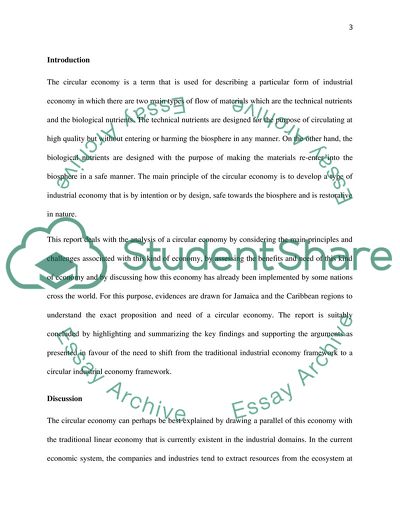Cite this document
(Potential Benefits of a Circular Economy Term Paper, n.d.)
Potential Benefits of a Circular Economy Term Paper. Retrieved from https://studentshare.org/macro-microeconomics/1686537-what-is-a-circular-economy-what-are-some-of-the-key-principles-concepts-and-building-blocks-and-what-system-shifts-might-be-needed-to-bring-it-about-at-scale
Potential Benefits of a Circular Economy Term Paper. Retrieved from https://studentshare.org/macro-microeconomics/1686537-what-is-a-circular-economy-what-are-some-of-the-key-principles-concepts-and-building-blocks-and-what-system-shifts-might-be-needed-to-bring-it-about-at-scale
(Potential Benefits of a Circular Economy Term Paper)
Potential Benefits of a Circular Economy Term Paper. https://studentshare.org/macro-microeconomics/1686537-what-is-a-circular-economy-what-are-some-of-the-key-principles-concepts-and-building-blocks-and-what-system-shifts-might-be-needed-to-bring-it-about-at-scale.
Potential Benefits of a Circular Economy Term Paper. https://studentshare.org/macro-microeconomics/1686537-what-is-a-circular-economy-what-are-some-of-the-key-principles-concepts-and-building-blocks-and-what-system-shifts-might-be-needed-to-bring-it-about-at-scale.
“Potential Benefits of a Circular Economy Term Paper”, n.d. https://studentshare.org/macro-microeconomics/1686537-what-is-a-circular-economy-what-are-some-of-the-key-principles-concepts-and-building-blocks-and-what-system-shifts-might-be-needed-to-bring-it-about-at-scale.


